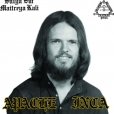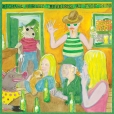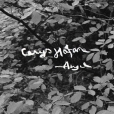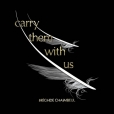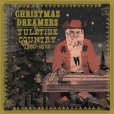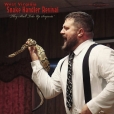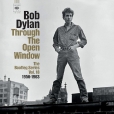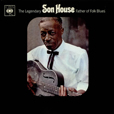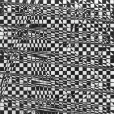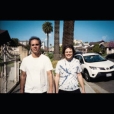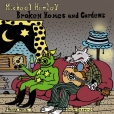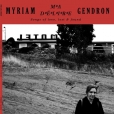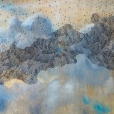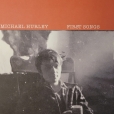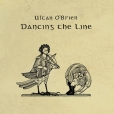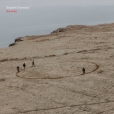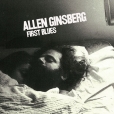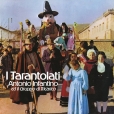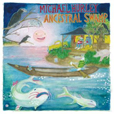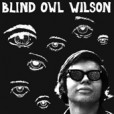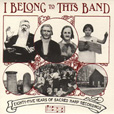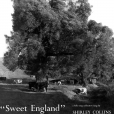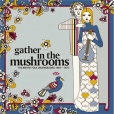Your basket is empty

‘Pure pleasure is what it is,’ writes Byron Coley. ‘This was probably the first time Hurley brought his band out of the hills. Guitar, bass, drums, piano and trumpet, all of them beautifully in sync and swinging like the rural hippie boogie band they were — tested by long nights in halls filled with rowdy snowmobilers and the women who love them. Hurley & the Redbirds were more than ready to bowl over the city slickers who filled Folk City this hot mid-summer evening. Snock’s voice is limber and strong, flipping easily into falsetto and yodels, and the music is faultless. Something like the Platonic ideal of what ‘bar rock’ can be. They only do one tune from Have Moicy!, but nobody could have minded. The music rolls out like the sweetest-ever guzzle of maple syrup laced with Mello Corn Whiskey. So loaded, so powerful, you’re likely to shit the bed if you listen lying down.’
Recorded in NYC in 1976.
Electrifying extracts from a Sunday service in the last snake-handling church in the Appalachians: the trance-like rhythms of a demented kind of rockabilly punk, with duelling guitars, concussive trap drums, and possessed, howling vocals.
“I’d sworn to stay far away from the snakes at the service,” recalls the recording engineer, “but instead they were waved in my face as they coiled in the preachers’ hands, and I crouched down at the foot of the altar tending to the equipment. The pastor soon was bitten and blood splattered, pooling on the floor. The female parishioners hurriedly came to wipe up the mess, and it instantly became clear just what the rolls of paper towels stacked on the pulpit had been for. You can actually hear this moment transpire towards the end of the track ‘Don’t Worry It’s Just a Snakebite (What Has Happened to This Generation?)’. The congregation leapt to its feet and a mini mosh-pit formed. The tag-team preachers huffed handkerchiefs soaked in strychnine, as they circled like aggro frontmen and an elderly worshipper held the flame of a candle to her throat, closing her eyes and swaying. The church PA blew out from the screams as a bonnet-wearing senior whacked away at a trap kit that dwarfed her. It was the most metal thing I’d ever seen, rendering Slayer mere kids play.”
Riveting 1965 review of his own staggering classics like Death Letter and John The Revelator, rinsed by everyone from Captain Beefheart to Jack White.
His lovely Folkways LP from 1965, when he was just 22, with classics-in-the-making like Blue Mountain and The Werewolf Song.
This is terrific; warmly recommended.
‘Brìghde Chaimbeul is a leading purveyor of celtic experimentalism and a master of the Scottish smallpipes; a bellows-blown, mellower cousin to the famous Highland bagpipes. A native Gaelic speaker, Brìghde roots her music in her language and culture. She rose to prominence as a prodigy of traditional music, but has since begun a journey to take the smallpipes into unchartered territory. She has devised a unique way or arranging for pipe music that emphasises the rich textural drones of the instrument; the constancy of sound that creates a trance-like atmosphere, played with enticing virtuosic liquidity. She draws inspiration from the world of interconnected piping traditions, but her most recent album brings in influence from ambient, avant garde and electronic music.’
With Arthur Russell, Bob Dylan, Anne Waldman, Perry Robinson, David Amram and co, having a whale of a time in sessions which sound like the best kind of parties, between 1971 and 1981.
‘Rags, Ballads & Harmonium Songs. Chanteys, Come-All-Ye’s, Aborigine Song Sticks. Gospel, Improvisations, Renaissance Lyrics, Blake Hymns, Bluegrass, Hillbilly Riffs, Country & Western, 50’s R&B, Dirty Dozens & New Wave.’
The first-ever full vinyl reissue; gatefold sleeve. Photography by Robert Frank!
Startling 1975 excursions into Tarantism — a kind of hysteria ostensibly triggered by spider bites, for which dancing is the only cure, with its own set of cultural traditions based in Basilicata, Apulia, Sicily.
Obsessive, hypnotic chants, rhythms, and drones, mixing together folk, avant-gardism, and psych, with shots of Dylan and North African drumming.
Laid-right-back — with old buddies Dave Reisch and Lewi Longmire, and Tara Jane O’Neil; a Blind Willie McTell and a Lightning Hopkins; and unmissable goes at favourites like Light Green Fellow. One of the very best Hurleys of them all.
Mass, full-voice singing from the rural South of the US. A stirring, tearful, ancient, strange, kind of Gospel. Ornette called it ‘breath music. They’re changing the sound with their emotions.’
Trá Pháidín are a nine-piece from Conamara, Galway, a wild coastal region of West Ireland, where Gaeilge remains the first language. They make a joyful noise — a unique and unpredictable blend of traditional Irish folk, post-rock, jazz, and Dadaist absurdity.
Their album An 424 is a freewheeling, dialectical consideration of the 424 bus route and its passengers, passing up and down the coastline from the Gaeltacht into anglophone Ireland, and vice versa, and taking in wondrous locations like Cuan na Gaillimhe / Galway Bay, An Bhoirinn / the Burren, na hOileáin Árann / the Arann Islands, Aillte an Mhothair / the Cliffs of Moher, Portach Mhaigh Cuilinn / the bogs of Maigh Cuilinn, Bóthar Loch an Iolra / Eagle lake road, Cuan Casla / Casla Harbour, Cuan an Fhir Mhóir / Greatman’s Bay, Cnoc Mordáin / Mordáin hill, Sléibhte Mhám Toirc / the Maamturk Mountains, Na Beanna Beola / the twelve pins…
‘This is a topic you could write a PhD about (and maybe someone already has),’ says the band. ‘But if you are someone who grew up or lives in this region, you have a particular understanding at this stage of how complicated Gaelic psyche is and the kind of spectrum of identity along bóthar Choise Fharraige. With the landscape in mind, this bus journey is a great meditation on the various topics of life.’
Listen out for flights of wild improvisation filled with brass, woodwinds, harp, and fiddles… and hard-nosed grooves.

